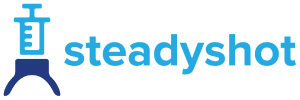By Janel Hutchison
Jaimie Sherling’s life was forever changed when she was diagnosed with breast cancer in April 2018. Just two months after diagnoses she underwent a double mastectomy, and for the following 15 months she endured a series of radiation and chemotherapy treatments.
By September 2019, Sherling was cancer-free and cleared to resume life as normal. However, life as a survivor, she found, was anything but normal.
After her double mastectomy, Sherling chose to forgo reconstructive surgery, which presented the new challenge of navigating life with a changed body. At first, Sherling found a solution in prosthetics, silicone disks that are inserted in bras to emulate breasts. After several months of use, however, Sherling decided to stop wearing the inserts.
“They’re not exactly comfortable,” Sherling said. “So [I thought]- Why would I wear this if I don’t have to?”
But without prosthetics, Sherling’s clothes didn’t fit anymore. V-neck shirts were too low, form-fitting clothing laid differently, and shirts with darts were useless. When Sherling started shopping for new clothes, she found that locating flattering feminine clothing that fit her body type was nearly impossible.
“It was a very painstaking process,” Sherling said. “I might be in a dressing room for two hours with stacks and stacks of clothes and find three things that work, maybe.”
After research, Sherling discovered there was not even a single line of clothing that caters specifically to women without breasts. With thousands of women undergoing double mastectomies every year, Sherling knew that many women were likely in the same situation, struggling with clothing fit on a daily basis. And so, after floating the idea to a few breast cancer survivor networking groups, Sherling decided to start her own line of clothing – one specifically made for survivors such as herself.
Wasting no time, Sherling completed the entrepreneurial training program at the Wisconsin UW-Madison Small Business Development Center this past fall, which she said was “a very valuable program for someone looking to be an entrepreneur.” Throughout the nine-week session, Sherling was connected with a business consultant who helped her write and finalize a business plan for “YDY (You Do You), Sweets,” a clothing line specifically designed for women who have had mastectomies.
“If I get my act together and things happen soon enough, I would be the first to market [to this demographic], which is pretty exciting,” said Sherling.
Sherling plans to design the line herself, which will eventually include tops, blouses, tunics and dresses. While she doesn’t know how to sew, Sherling said she “knows what works and what doesn’t,” and so “feels confident” in her ability to work with a pattern maker to design items that are both comfortable and flattering.
Already, Sherling has one item that she is ready to launch, a cowl neck tunic that she has named “The Heather.” Marketing at $80, the top features “no fuss, wash and wear” fabric that skims the body and will be offered in a variety of different colors and feminine prints. Sherling plans to launch the item by taking pre-orders on social media, which she said was the “lowest risk” option given her limited budget.
Until Sherling secures the funding to develop a website, she plans to market her line through Instagram and Facebook, through which she will actively respond to questions and accept orders. Sherling said she hopes this initial marketing strategy will give her the success she needs to attract interest from investors.
While Sherling was hoping to launch her first item this month, the COVID-19 pandemic has pushed back her timeline.
“I just don’t feel it’s the right time given our world [crisis],” said Sherling. “But I know that I still will [launch] and I’m ready to go. It’s just a matter of timing.”
Once launched, Sherling hopes that YDY, Sweets will attract interest from both consumers and investors, as increased funding will allow her to establish an inventory, build an online store, and eventually begin marketing in small boutiques, hospitals and cancer centers.
This business plan, Sherling said, is driven by the belief that breast cancer survivors deserve better — that their stories are theirs to tell, and they should have the power to decide how they look and how they dress.
“YDY, Sweets [stands for] ‘You Do You,’ and that is the basis of my entire line,” Sherling said. “If you want to wear my clothing and not have prosthetics underneath … perfect. If some days, you want to wear prosthetics in other clothing … great. It’s all your choice… And right now, women in my circumstances do not have [that] choice.”
Hutchison is a student in the UW-Madison Department of Life Sciences Communication.





 Communication is critical in any healthy relationship, including the relationship between you and your body. Think about how your body talks with you. Does it need energy? If it does, your stomach will grumble, begging you for food. Did your body overexert itself during a workout? You’ll feel fatigued and have lasting muscle soreness, warning you to take it easier next time.
Communication is critical in any healthy relationship, including the relationship between you and your body. Think about how your body talks with you. Does it need energy? If it does, your stomach will grumble, begging you for food. Did your body overexert itself during a workout? You’ll feel fatigued and have lasting muscle soreness, warning you to take it easier next time. After a year of historic social and racial turmoil, many corporations have committed to create an inclusive and diverse workplace. Those pledges can fall short of accomplishing company goals due to a lack of diversity-focused hiring resources.
After a year of historic social and racial turmoil, many corporations have committed to create an inclusive and diverse workplace. Those pledges can fall short of accomplishing company goals due to a lack of diversity-focused hiring resources. Trevor Santarius has always consumed a variety of written material, from books to newsletters to online blogs and more. In his consumption of text-based media, Santarius imagined the excitement that could come from turning these writings into a more interactive tool. This is when Santarius took his brother-in-law, Luke Southard, who is a full-stack software engineer, under his wing to help him create BookScape.
Trevor Santarius has always consumed a variety of written material, from books to newsletters to online blogs and more. In his consumption of text-based media, Santarius imagined the excitement that could come from turning these writings into a more interactive tool. This is when Santarius took his brother-in-law, Luke Southard, who is a full-stack software engineer, under his wing to help him create BookScape. A device created by the team at Atrility Medical assists doctors caring for cardiac surgery patients to quickly and accurately recognize heart rhythm issues following surgery.
A device created by the team at Atrility Medical assists doctors caring for cardiac surgery patients to quickly and accurately recognize heart rhythm issues following surgery. In an intensive care unit, every move can mean life or death for a patient. Every time doctors and nurses transport patients, they risk a life, and even the smallest of complications — a tube getting stuck, for example — can bring their world crashing down.
In an intensive care unit, every move can mean life or death for a patient. Every time doctors and nurses transport patients, they risk a life, and even the smallest of complications — a tube getting stuck, for example — can bring their world crashing down.